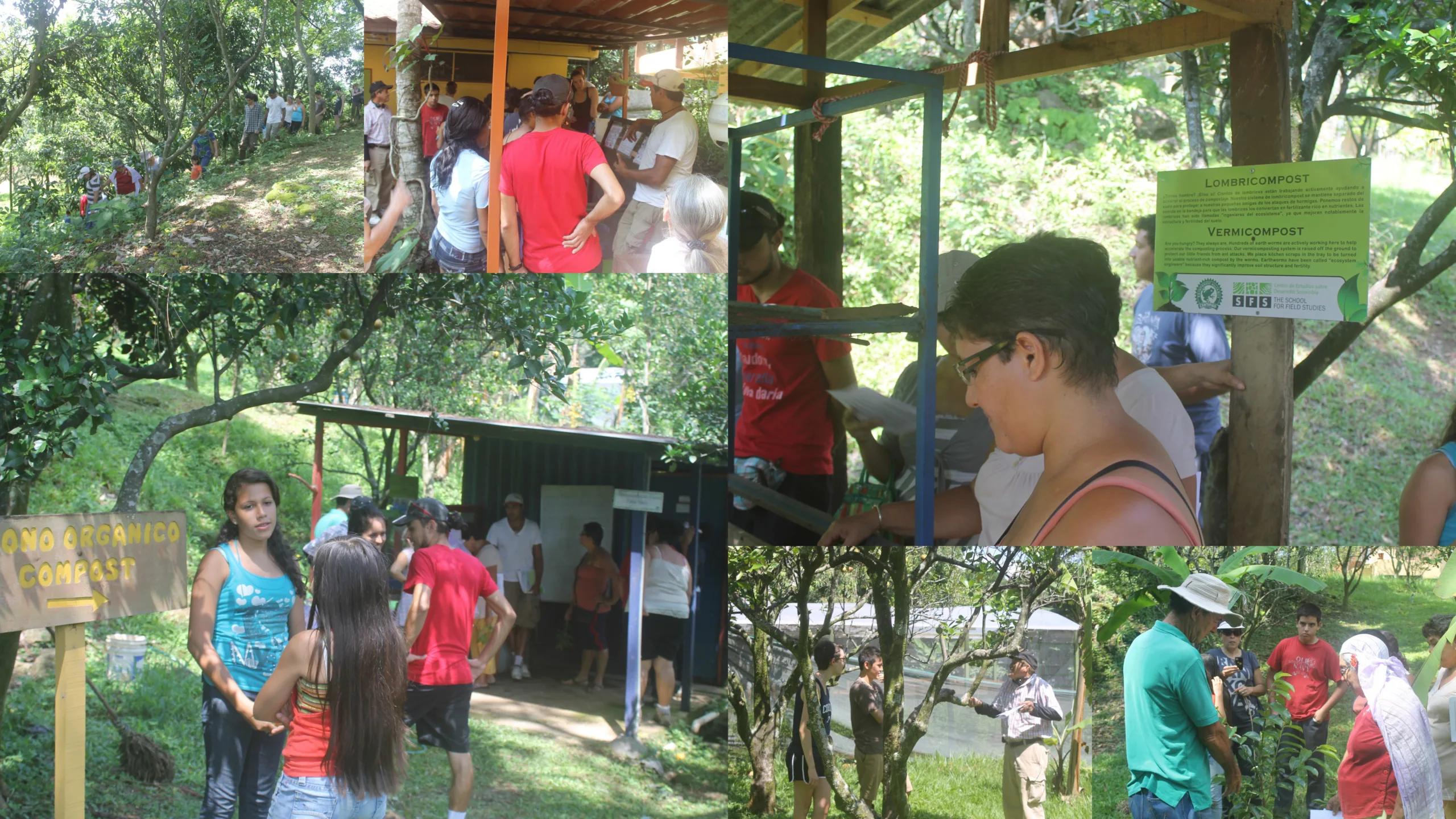
By: Marta Brill
Classes, Research, and Outreach: Three Pillars of Costa Rica’s Academic Curriculum
Beyond all the introductory meetings and orientation activities, several classes provided students with the necessary background to approach this session successfully. However, the highlight of the week was our field trip to an often unexplored area of the Children´s Eternal Rainforest, in the mist of the premontane wet forest near the continental divide that separates the Atlantic and the Pacific slopes.


The Pocosol research station of the Monteverde Conservation League was our base camp and field laboratory where students compared species composition, pollination and dispersion mechanisms in primary and secondary premontane wet forests. This outstanding forest with a lagoon and waterfalls also provided a great setting for frog and bird watching.
We ended the week with outreach activities where half of the group participated in tree planting in the upper hills of the Cacao river watershed. The rest of our students engaged with kids, parents, and grandparents from our community in environmental educational activities in our Rainforest Alliance certified™ farm; this time we focused on how to compost organic residues use to fertilize our crops, although they hiked our forest trail, explored our farm and met our animals, and enjoyed a “mejenga” (Costa Rican slang for pick-up soccer match). This is how we ended our first week where Summer 1 students and staff welcomed new arrival students to initiate Summer 2: Applied Research Techniques and Strategies Toward Sustainable Development in the Costa Rica.

Related Posts


Alumni Reflections: Stories of the Return to Kenya
